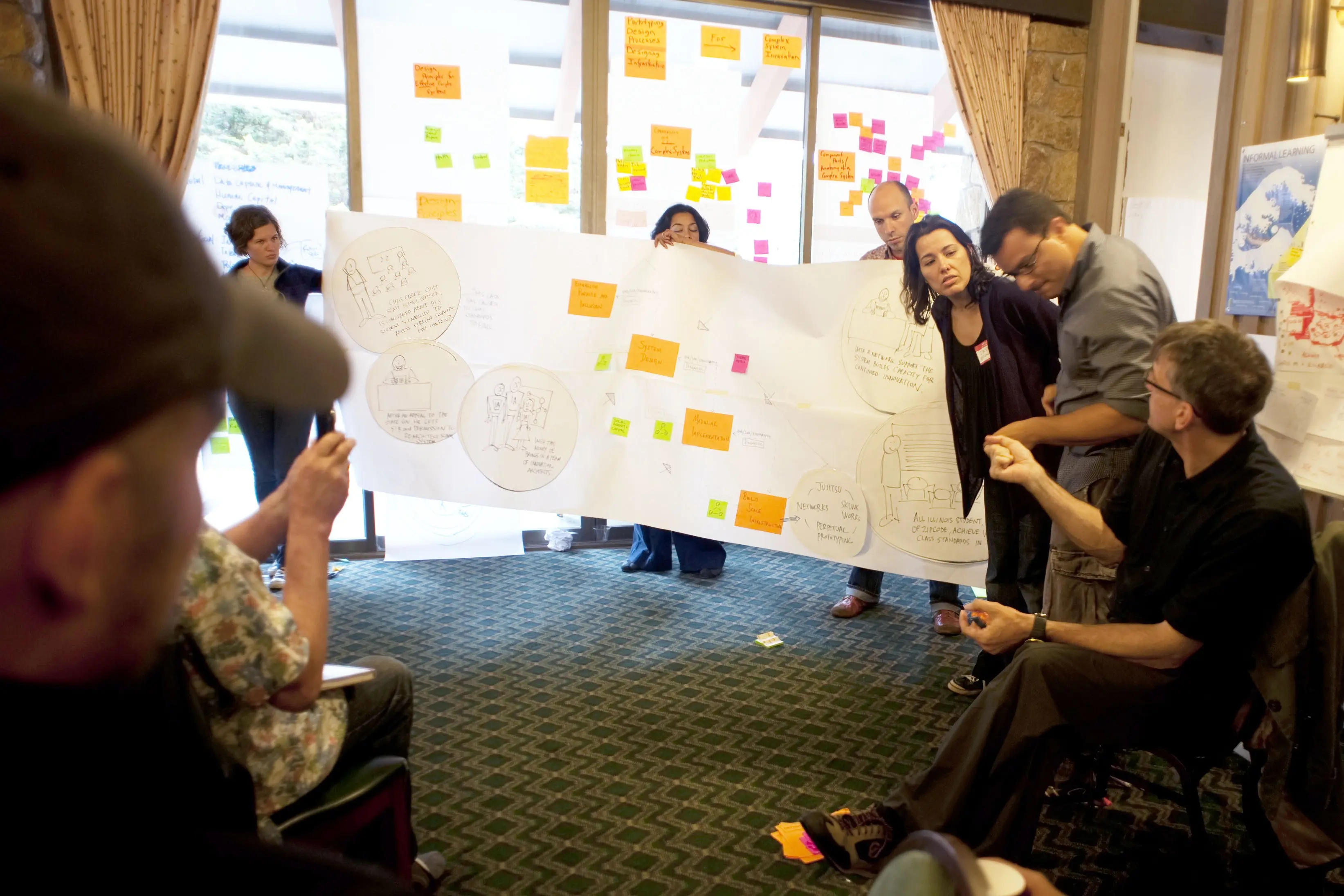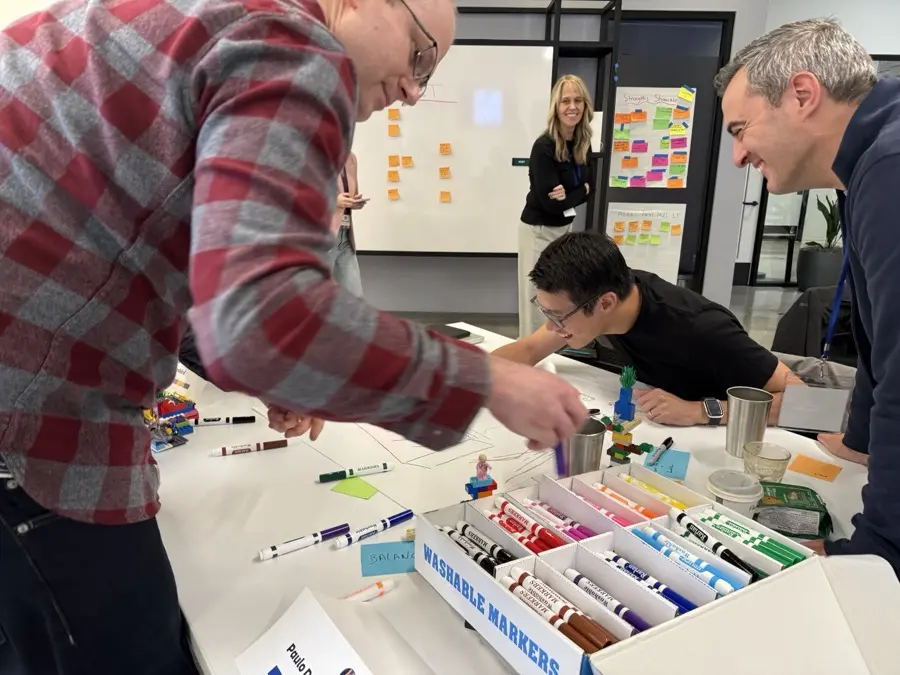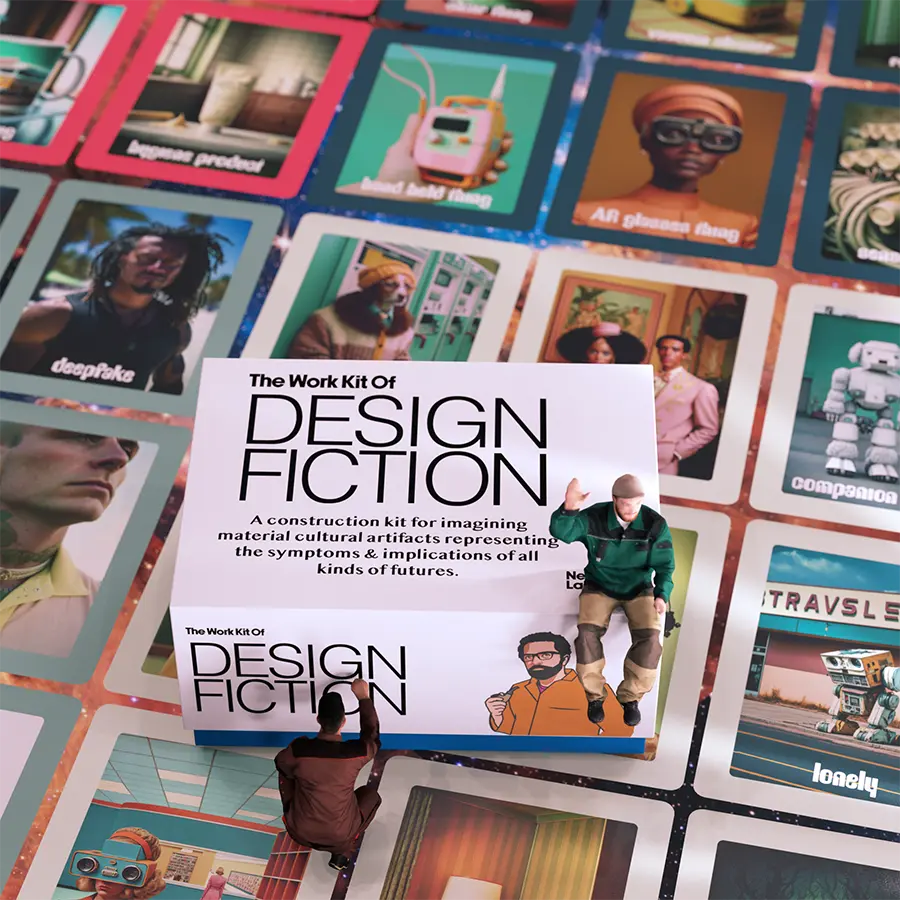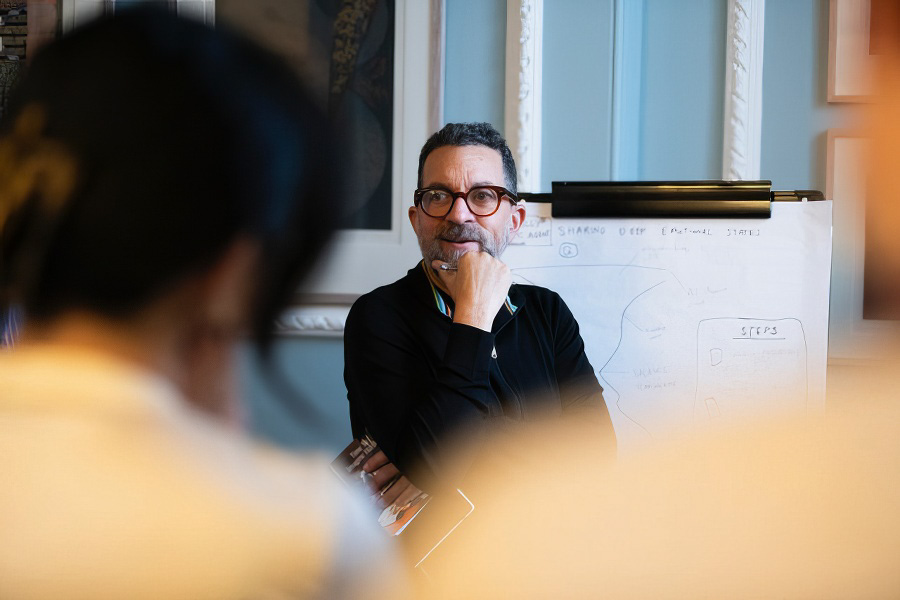💡 Practical Futuring for Financial Services
A Proposal for FCAT: Futures-Centered Innovation through Design Fiction
Proposed by: Julian Bleecker, BSEE, MSEng, Ph.D.
Format: A three-part hands-on workshop series
Audience: FCAT innovation teams exploring the next wave of applied AI, customer experience, and financial services design
Objective: Equip teams with speculative design and Design Fiction methods that support innovation in conditions of high uncertainty, rapid technological change, and ambiguous opportunity.
Motivation: Developing upon our previous discussions and Keynote in January, this proposal outlines a series of workshops that will help FCAT teams explore the future of financial services through speculative design and Design Fiction. These workshops will provide a structured yet imaginative approach to exploring emergent, unexpected, and unanticipated opportunities in the financial services landscape.
Duration: 3 sessions, 4 hours each (total: 12 hours)
Location: Onsite at Fidelity, Boston (or virtual)
🎯 Why Now?
FCAT exists to catalyze innovation within Fidelity — operating as a forward-looking research and technology practice inside one of the world’s most trusted financial institutions.
But today’s context presents new challenges:
- Emerging technologies evolve faster than understanding or regulation.
- Customer expectations shift with new forms of interaction, trust, and labor.
- Financial services are shaped not just by markets, but by cultural signals, systemic shocks, and unpredictable black swan events.
Traditional roadmaps and trend reports are no longer enough. FCAT needs tools for working in a space of unknowns — techniques that allow for faster, more imaginative prototyping of futures that may be just beyond the visible horizon.

🔍 What Is Practical Futuring?
This workshop series introduces speculative design and Design Fiction as pragmatic, proven innovation tools used at the edge of industry — in organizations like Google, DeepMind, Anthropic, Atlassian, X-AI, Meta, BetaWorks, USC’s Iovine Young Academy, and Y Combinator.
These methods are:
- Rapid prototyping techniques that use elements of science fiction and foresight to explore new service concepts
- Functional and tangible, not abstract — using artifacts, not just prose-based descriptions, from imagined futures to explore strategic directions today
- Similar in principle to Amazon’s “Working Backwards” method, but richer in cultural, behavioral, and systemic insight. In many cases, the artifacts are functional in an engineered sense, providing opportunities for development teams to collaborate with design and strategy teams in a more integrated way.

🧭 Workshop Structure: Three Sessions
Each session builds toward tangible speculative artifacts and future scenarios relevant to FCAT’s remit.
🛠️ 1. Signals to Scenarios (Foresight and Framing)
- Identify emerging technological, social, and economic signals
- Translate these into plausible, provocational near-future scenarios
- Build confidence in navigating ambiguity and building foresight into the product and service pipeline
🧱 2. Artifacts from the Future (Design Fiction Sprint)
- Learn how to prototype as if a future exists
- Create artifacts from this future: regulatory memos, new forms of identity or labor, fintech platforms, contracts, influencer reviews, onboarding flows, resistance movements
- Use these artifacts to provoke critical discussion, ideation, and new concept directions
🎭 3. Immersion & Backcasting
- Translate your speculative world into immersive storytelling
- Examples: video mockups, interactive presentations, faux customer stories, speculative pitch decks
- Use backcasting to analyze how this future could realistically emerge — and what must happen (or be avoided) to get there
- Develop strategic foresight skills that help guide innovation with longer-term impact
🎯 Outcomes for FCAT Teams
- A reusable toolkit and associated learnings for practical and applied futures work
- Future scenarios grounded in Fidelity’s strategic focus
- Concept directions for applied AI, trust, transactions, payments, finance, work, and identity, all core elements of value and its circulation and exchange
- A shared language for discussing the “edges” of what’s possible
- Internal assets (artifacts, narratives, provocations) for use in presentations, R&D, and cross-team innovation efforts
🔬 Topics We Might Explore (tailored to FCAT)
- Applied AI in customer relationships, service design, and regulation
- Data sovereignty and digital identity
- Cryptocurrency, digital assets, and the future of money
- Providing financial services in a world of AI and automation
- The future of work, labor, and compensation as relates to consumer and institutional finance
- The future of financial literacy, investment tools, and trust
- Algorithmic governance in financial platforms
- Culture shifts in work, employment, and compensation
- Ethical risk as a design material

📦 Bonus: The Design Fiction Toolkit
All workshops include tools and frameworks adapted from The Manual of Design Fiction and used in advanced innovation teams across tech and media:
- The Work Kit of Design Fiction
- Enhanced Digital Edition of The Manual of Design Fiction (macOS)
- Print editions of The Manual of Design Fiction, TBD Catalog, and Applied Intelligence: The Newspaper from an AI Future
- Workshop Guides & Workbooks
- Speculative Artifact Library

🚀 Next Steps
Let’s collaborate to:
- Tailor the first session to FCAT’s most urgent focus areas (e.g. Applied AI, customer experience, governance)
- Identify 6–12 participants for the first cohort
- Build a pipeline for applied outcomes and continued use across FCAT teams
Design Fiction is not storytelling. It’s a way of thinking with things, making the future tangible, and helping teams act wisely before the future arrives.

🙋🏽♂️ About Julian Bleecker
Julian Bleecker BSEE, MSEng, Ph.D., is a product designer, engineer, and innovation strategist with 20+ years of experience developing successful products, learning platforms, systems, and futures techniques for leading tech organizations.
He holds two engineering degrees from Cornell University and University of Washington, Seattle, and a Ph.D. from the University of California, Santa Cruz where he studied with Professors Donna J. Haraway and Angela Y. Davis.
He is founded of the Near Future Laboratory, a design and innovation consultancy that established Design Fiction, and wrote the book on that practice. In 2022 he sold his product company OMATA which made the OMATA One, the world’s first hybrid analog-digital sports computer.
He has worked with advanced design, strategy, engineering, and futures teams at:
- AI Governance & Policy Working Group
- Google X (Alphabet)
- Apple
- Meta
- IKEA
- DeepMind
- Amazon
